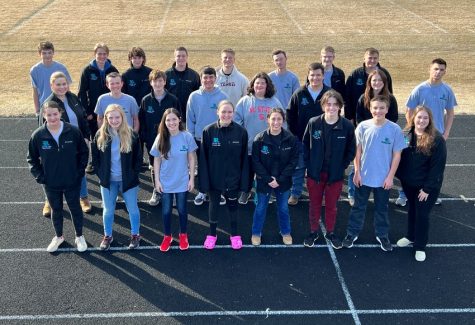Amazon Forest Fire affects Climate Change even further

Photo courtesy of Steve Connor
September 12, 2019
On August 16 a massive wildfire broke out in the Amazon Rainforest in Brazil. This has raised international concern about the world’s climate and the well-being of the forest itself. Some scientists claim that the world has always been burning and that the Amazon is not seeing above-normal fire activity this year. Others say the fires are accelerating global warming and further damaging the climate.
“As of August 16, 2019, satellite observations indicated that total fire activity in the Amazon basin was slightly below average in comparison to the past 15 years.” NASA (National Aeronautics and Space Administration) said.
There have been about 26,000 Amazon fires in this month alone. Many of these recent fires are purposely lit for farming purposes and deforestation. Considering over 34 percent of Brazil’s land is used for farming, deforestation is necessary for its economy.
Another big drive for the fires is cattle ranching. This contributes $6.7 billion to Brazil’s economy. Eighty percent of the soybeans grown in deforested areas go toward animal feed, further influencing the need for land and proper soil for the crops.
“Fire can also be an important part of maintaining diverse and healthy ecosystems. This can trigger a rebirth of forests, helping to maintain native plant species.” Smokey Bear of the Cooperative Forest Fire Prevention (CFFP) said, this means that many wildfires are unsafe, but some are very beneficial to the land surrounding it. This is a valid point to the reasoning behind the fires benefiting the land used for soybean farming, which circles back to cattle farming.
Illegal mining and logging is another drive for the fires, farmers, however; have permits for lighting fires for farming. Many Amazon protection laws forbid illegal mining and logging in the area, but that doesn’t stop people from doing it. These together have risen the deforestation rates to 88 percent over the past year. Seventeen percent of the forest has been lost already. Due to these percentages, there has been a ban for all human-made fires for 60 days in Brazil.
Environmental protection agencies are adamant on secure forest preservation acts to be enforced by Brazilian President, Jair Bolsonaro. The Amazon holds one-fifth of the world’s freshwater and is the main “Carbon Sink,” meaning that the forest absorbs massive amounts of carbon dioxide. Studies suggest it absorbs 2.2 billion tons of carbon dioxide every year. Losing too much of the forest could be detrimental to the earth’s climate.
Leaders of the G7 countries met together and pledged to send a $20 million aid package to Brazil to help combat the blaze. Bolsonaro refused the money, but offered to accept if French President Emmanuel Macron apologized for a rude comment made about Bolsonaro’s wife. Later Bolsonaro said he would accept the aid if Macron retracted his comments about Bolsonaro’s leadership and commitment to preventing further forest fires.
There is a lot of controversy about the Amazon fire, with various reporters and officials making opposite claims about the urgency of putting the fires out. Some say it was entirely intentional, others say it is only making the earth’s climate worse. Yes, some of the fires were intentional, while some were illegal. But is it 100 percent safe for the earth’s climate?









